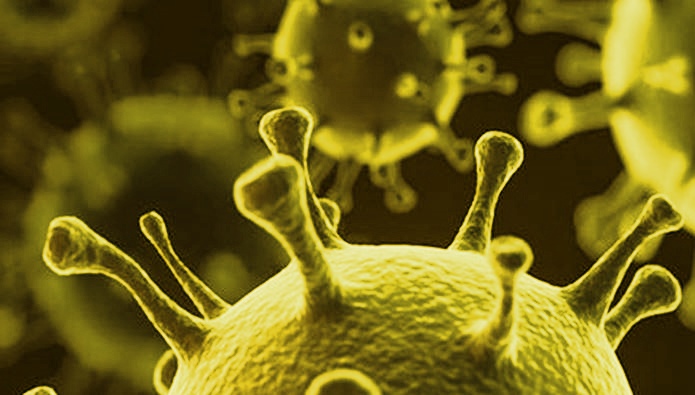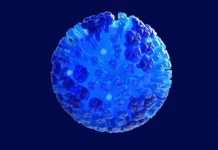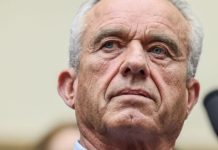NEW YORK, May 20 (UPI) — The United States might be getting up to speed with COVID-19 testing, experts say, as several states announced plans Wednesday to expand access to diagnostic evaluations.
Hawaii, Maryland and Missouri, among others, have indicated that they will make testing available to more people in the weeks ahead as the new coronavirus, SARS-CoV-2, continues to spread in parts of the country.
Testing large segments of the population is seen as key to containing the outbreak, as well as allowing the country to reopen after weeks of lockdown, said Brandon Brown, an associate professor at the Center for Healthy Communities at the University of California-Riverside.
“Testing is essential in reopening the economy,” Brown told UPI on Wednesday. “Many cities, counties and states have begun lifting restrictions, which may likely increase the number of infections without proper protection and surveillance.”
Through Wednesday morning, more than 1.53 million Americans have been infected with SARS-CoV-2, Johns Hopkins University estimates. As of Monday, the United States had tested nearly 12 million people — or a rate of 36 per 1,000 in the general population — for COVID-19, according to researchers at the University of Oxford.
Although the current testing rate is on par with other countries that have been particularly aggressive in identifying those infected, the United States was much slower reaching that level, the Oxford data analysis shows.
Earlier this week, the U.S. Department of Health and Human Services announced $11 billion in funding for testing and contact tracing initiatives at the state and local level.
The funds come from the Paycheck Protection Program and Health Care Enhancement Act and will provide “critical support to develop, purchase, administer, process and analyze COVID-19 tests, conduct surveillance, trace contacts and related activities,” HHS officials said.
“For the sake of all Americans’ health and well-being, we must help Americans get safely back to work and school, and that requires continued expansion of testing, surveillance, and contact tracing,” HHS Secretary Alex Azar said in a statement.
The funding will allow for expanded use of RT-PCR tests, which evaluate throat and nasal swabs taken from people for the presence of the COVID-19 virus. The funds might also expand availability of antibody tests, which check blood for immune cells that protect against SARS-CoV-2, officials indicated.
Antibodies develop in people who have been infected with the virus. A report published Tuesday in the journal Science Immunology found that widespread availability of antibody tests could help provide public health officials with “snapshots” of infection history and immunity in the general population.
“Widespread antibody testing is important to better understand the spread and epidemiology of the virus and to assist with contact tracing,” said the University of California-Riverside’s Brown, who was not involved in the Science Immunology paper.
The World Health Organization has recommended that use of these tests be limited to research settings — in part because they are expensive and there may be accuracy issues with some of them — but the authors of the Science Immunology paper argue that they could provide highly valuable information to guide decisions on when to relax stay-at-home orders or open schools.
They might also enable “immune passports” that certify immunity, which allow those who qualify to return to work or school.
On Wednesday, Missouri Gov. Mike Parson set a goal of testing 7,500 state residents daily for COVID-19. To date, the state has been testing fewer than 2,500 people per day, according to an analysis by Johns Hopkins University.
Officials in Hawaii also this week announced plans to make an additional 100,000 COVID-19 tests available, while Maryland said it hopes to begin expanding virus testing to include “asymptomatic” people.
Nationally, the United States is testing 350,000 people per day, but this figure “should increase by three or four times,” Howard Koh, the Harvey V. Fineberg Professor of the Practice of Public Health Leadership at Harvard T.H. Chan School of Public Health, said during a conference call with reporters Wednesday.
Positive tests also have dropped to below 10 percent in recent days, after hovering above 20 percent for several weeks, he said. In comparison, South Korea has a “positivity rate” of 2 percent, according to Koh, who was the assistant secretary for health during the Obama administration.
Although he described the recent testing initiatives as “encouraging,” Koh, who was involved in the federal response to the H1N1 pandemic in 2009, noted that the United States “also needs to test smarter as well as harder.”
This, he said, requires a focus on at risk populations, including nursing home residents, prison inmates, the homeless, communities of color and those with underlying health conditions like heart disease, high blood pressure and diabetes.
“The good news is that testing rates have gone up recently and many states have begun to move beyond testing only symptomatic people,” he said. “We are making progress but we still have quite a ways to go.”







